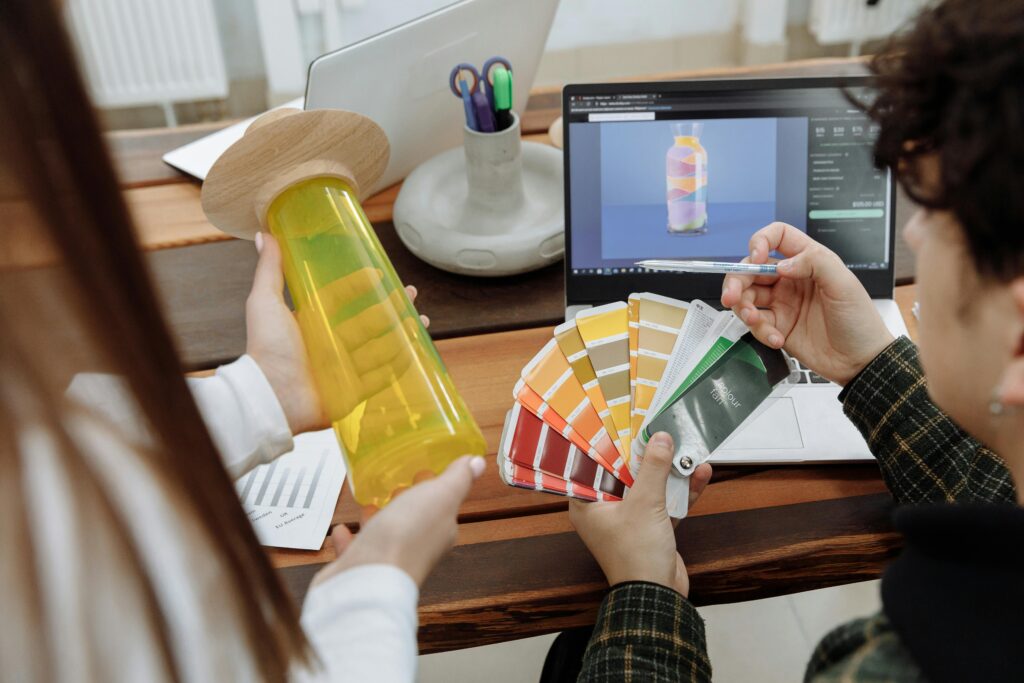
In the world of branding, color is more than just aesthetics. It’s a powerful tool that can evoke emotions, influence perceptions, and ultimately drive customer behavior. We’ll explore the fascinating realm of color psychology, explore why color is crucial in branding, and guide you through the process of selecting the perfect brand colors for your business.
Understanding Color Psychology: More Than Meets the Eye
Color psychology is the scientific exploration of how colors affect human emotions and behavior. Each hue holds a unique set of associations and meanings deeply ingrained in our cultural and personal experiences. These subconscious connections are what make color such a potent tool in the hands of marketers and brand strategists.
- Red: The color of passion, excitement, and urgency. It can ignite action and create a sense of energy, making it a popular choice for brands seeking to grab attention or stimulate impulse purchases. Think of the bold red of Target or the fiery red of Coca-Cola.
- Blue: A symbol of trust, reliability, and serenity. It evokes feelings of calmness, stability, and professionalism, often favored by financial institutions, healthcare providers, and tech companies like IBM or Facebook.
- Yellow: The color of optimism, creativity, and happiness. It radiates warmth and positivity, making it a great choice for brands targeting younger audiences or promoting cheerful experiences like McDonald’s golden arches.
- Green: Represents nature, growth, and harmony. It signifies freshness, sustainability, and health, often chosen by brands in the organic food or wellness industries like Whole Foods or Starbucks.
- Orange: A blend of red’s energy and yellow’s optimism. It suggests enthusiasm, creativity, and affordability, frequently used by brands like Nickelodeon or Home Depot.
- Purple: Associated with luxury, royalty, and sophistication. It exudes elegance and mystery, appealing to brands targeting a high-end clientele like Hallmark or Cadbury.
While these are general associations, it’s important to remember that cultural context and individual preferences also play a role in how we perceive colors.
Why Color is Crucial in Branding
The strategic use of color in branding can yield a multitude of benefits for your business:
- Instant Recognition: Consistent brand colors create a visual shorthand for your business, making it instantly recognizable even without a logo or name. Imagine the iconic Tiffany blue box – a symbol of luxury and elegance that needs no introduction.
- Emotional Resonance: Colors tap into our emotions, forging a deeper connection with your brand. A warm and inviting orange can make customers feel welcomed and appreciated, while a calming blue can instill trust and confidence.
- Differentiation and Memorability: In a crowded marketplace, a distinctive color palette can help your brand stand out from the competition and leave a lasting impression. Think of the vibrant magenta of T-Mobile, which sets it apart in the telecommunications industry.
- Brand Personality: Colors are a non-verbal way to communicate your brand’s personality and values. A playful pink might suggest a fun and youthful brand, while a classic black might convey sophistication and authority.
- Influence on Buying Behavior: Research has shown that colors can significantly impact purchasing decisions. The right color can trigger impulse buys, encourage customer loyalty, and even increase perceived value.
Crafting Your Brand’s Color Palette: A Strategic Approach
Choosing the right brand colors is a critical decision that should be made with careful consideration:
- Define Your Brand Identity: Start by articulating your brand’s core values, personality, and target audience. What emotions do you want to evoke? What message do you want to convey?
- Consider Your Industry: Research the typical color palettes used in your industry. While it’s important to stand out, you also want to ensure your colors are relevant and appropriate for your field.
- Explore Color Psychology: Research the meanings and associations of different colors. Consider how they align with your brand identity and target audience.
- Create a Color Palette: Choose a primary color that embodies your brand’s essence and then select secondary and accent colors that complement and enhance it. Experiment with different combinations until you find a palette that feels right. Our favorite color palette generator Coolors, Color Hunt and Canva.
- Test and Refine: Get feedback from your target audience and make adjustments as needed. Remember, your brand colors should resonate with your customers and reinforce your brand message.
If you’re feeling overwhelmed by the vast world of color psychology, our team of branding experts is here to help. We specialize in helping businesses like yours harness the power of color to create visually compelling and emotionally resonant brand identities. Contact us today and let’s paint a brighter future for your brand together.